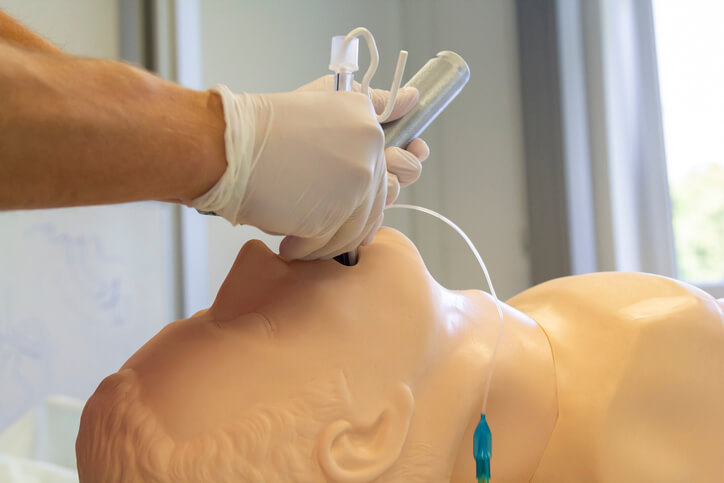
Sooner or later, every first responder encounters a difficult airway. Training for these scenarios is critical for improving patient care and reducing first responder frustration and burnout. There’s no substitute for lived experience, critical feedback from experienced providers, and drills that mimic real-world situations. And keeping in mind these five tips can help you more effectively treat difficult airways.
- Know what makes an airway ‘difficult’
A difficult airway is not a medical diagnosis, and the clinical literature has not arrived at a single definition of a difficult airway. Indeed, an airway that one provider finds difficult might seem manageable to another.
In this regard, there’s really no such thing as an airway that is inherently difficult. Instead, whether or not an airway is difficult depends on the training of the provider and the equipment they have available. Some signs that a person’s airway may present difficulties include:
- The patient’s uvula is not visible or is only partially visible.
- The patient is elderly or a very young child.
- The patient is obese.
- The patient is mentally ill or cognitively disabled and may be unable to cooperate.
- The patient has a condition such as pneumonia or acute respiratory distress.
- The patient is snoring.
- The patient is pregnant. Pregnancy may change the shape of the airway, and the presence of the hormone relaxin increases the risk of aspiration.
- Assess with LEMON
A simple acronym can help you assess an airway to determine its probability of being difficult:
- L – Look for external signs of difficulty, such as large or missing teeth, a broken jaw, or a large tongue.
- E – Evaluate using the 3-3-2 rule: The mouth should be three fingers wide, top to bottom, when open; the space from chin to hyoid bone should also be three fingers wide. The distance between the hyoid bone and thyroid notch should be at least two fingers wide.
- M – Mallampati score. Higher scores correlate with more difficult airways. Class 1 airways allow full exposure of the posterior pharynx, and class 2 means the pharynx is partially exposed. Class 3 means the base of the uvula is exposed, but not the posterior pharynx. Class 4 means no posterior structure is visible.
- O – Obstruction. Evaluate for conditions that might obstruct the airway.
- N – Neck mobility. Limited neck mobility, such as the kind that can occur following a spinal cord injury, increases airway difficulties.
- Keep the patient calm
Calm patients are better equipped to follow instructions. Moreover, patient panic can increase airway difficulty and respiratory distress, so keep the patient calm and explain what you intend to do. This is especially important in children and patients with cognitive or developmental disabilities. If possible, have a support person present for the patient. Do not restrain the patient or otherwise force treatment unless the patient’s life depends on doing so.
- Be prepared to manage aspiration
Patients with difficult airways are more likely to aspirate or choke. This is particularly true when the patient is vomiting or bleeding. Monitor the patient for signs of aspiration or sudden changes in oxygenation. The SSCOR SDC Catheter™ (Formerly the SSCOR DuCanto Catheter®) is an excellent tool for preventing and treating aspiration because it can deliver safe, continuous suction. Suction Assisted Laryngoscopy and Airway Decontamination (SALAD) can prove life-saving in aspirating patients.
Following an aspiration event, a patient must be transported. The risks of aspiration are not limited to the immediate crisis. Aspiration exposes patients to contaminants that can cause pneumonia and other life-threatening infections, so ongoing evaluation and monitoring are critical to patient care and safety.
- Have a range of tools
Managing a difficult airway means that the first technique you try is more likely to fail than when working with a regular airway. It’s critically important to have a range of tools and techniques available, including catheters of varying sizes. Difficult airway management requires ingenuity and critical thinking, so first responders should not be trained in just a single device or technique.
A portable emergency suction device is an important tool in your kit. It allows you to immediately tend to the patient rather than moving them, which can improve patient safety in the event of spinal injuries, patient noncompliance, aspiration, severe obesity that makes transport difficult, and other common challenges. For help choosing the right device for your agency’s needs, download our free guide, The Ultimate Guide to Purchasing a Portable Emergency Suction Device.
Editor's Note: This blog was originally published in June, 2019. It has been re-published with additional up to date content.
















